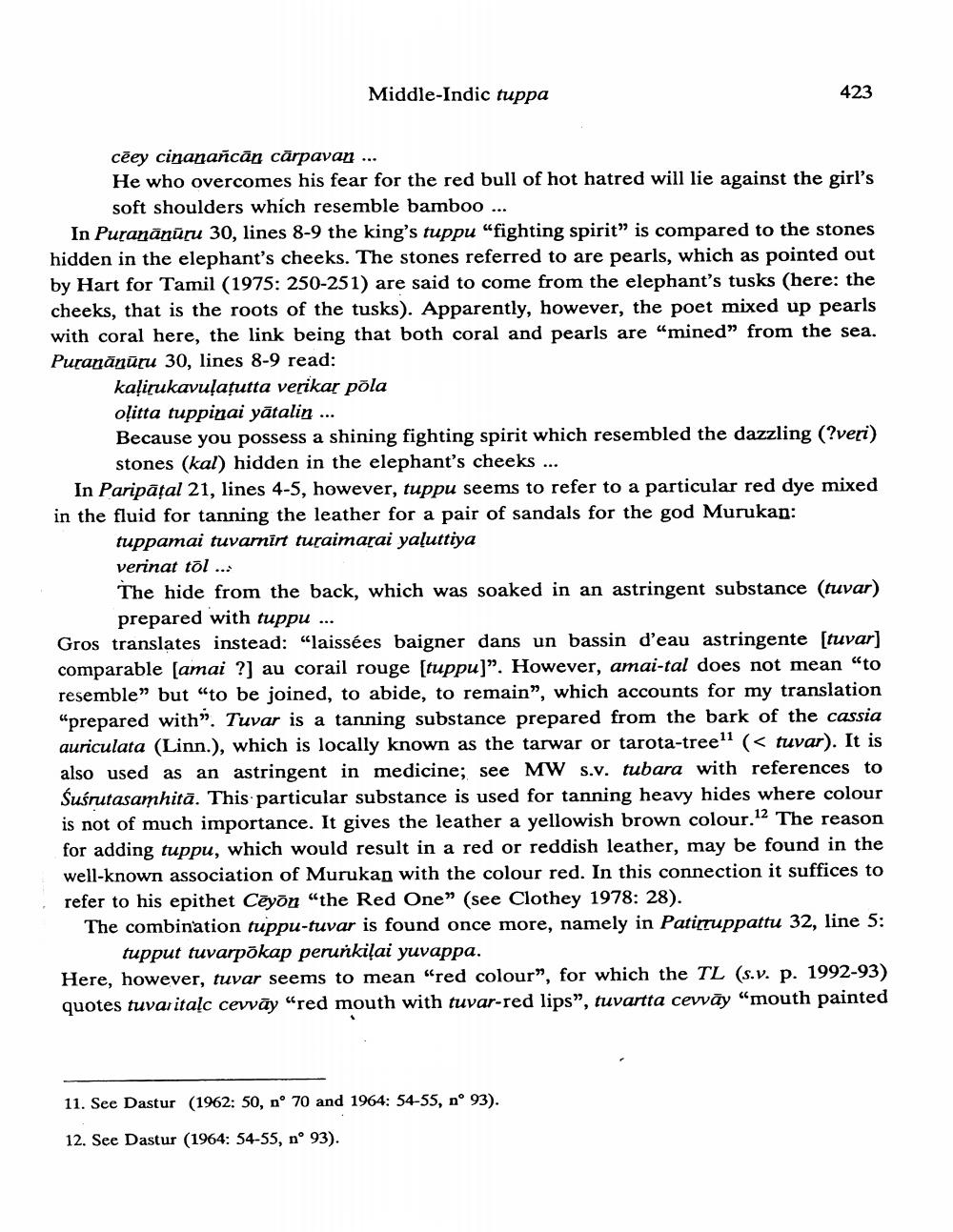________________
Middle-Indic tuppa
423
cēey ciŋanañcân cärpavan ... He who overcomes his fear for the red bull of hot hatred will lie against the girl's
soft shoulders which resemble bamboo ... In Puranānüru 30, lines 8-9 the king's tuppu “fighting spirit” is compared to the stones hidden in the elephant's cheeks. The stones referred to are pearls, which as pointed out by Hart for Tamil (1975: 250-251) are said to come from the elephant's tusks (here: the cheeks, that is the roots of the tusks). Apparently, however, the poet mixed up pearls with coral here, the link being that both coral and pearls are "mined" from the sea. Puranānūru 30, lines 8-9 read:
kaļirukavuļațutta verikar pola oļitta tuppinai yātalin ... Because you possess a shining fighting spirit which resembled the dazzling (?veri)
stones (kal) hidden in the elephant's cheeks ... In Paripāțal 21, lines 4-5, however, tuppu seems to refer to a particular red dye mixed in the fluid for tanning the leather for a pair of sandals for the god Murukan:
tuppamai tuvarnirt turaimarai yaļuttiya verinat tol ... The hide from the back, which was soaked in an astringent substance (tuvar)
prepared with tuppu ... Gros translates instead: "laissées baigner dans un bassin d'eau astringente [tuvar) comparable (amai ?] au corail rouge [tuppu)”. However, amai-tal does not mean "to resemble” but “to be joined, to abide, to remain", which accounts for my translation “prepared with”. Tuvar is a tanning substance prepared from the bark of the cassia auriculata (Linn.), which is locally known as the tarwar or tarota-tree" (< tuvar). It is also used as an astringent in medicine; see MW s.v. tubara with references to Suśrutasamhitā. This particular substance is used for tanning heavy hides where colour is not of much importance. It gives the leather a yellowish brown colour.12 The reason for adding tuppu, which would result in a red or reddish leather, may be found in the well-known association of Murukan with the colour red. In this connection it suffices to refer to his epithet Cēyon "the Red One” (see Clothey 1978: 28). The combination tuppu-tuvar is found once more, namely in Patirruppattu 32, line 5:
tupput tuvarpõkap peruńkiļai yuvappa. Here, however, tuvar seems to mean "red colour”, for which the TL (s.v. p. 1992-93) quotes tuvaritaļc cevvāy “red mouth with tuvar-red lips”, tuvartta cevvāy "mouth painted
11. See Dastur (1962: 50, n° 70 and 1964: 54-55, n° 93).
12. See Dastur (1964: 54-55, n° 93).




